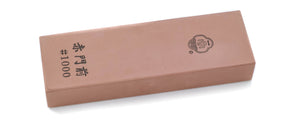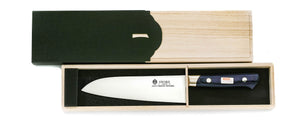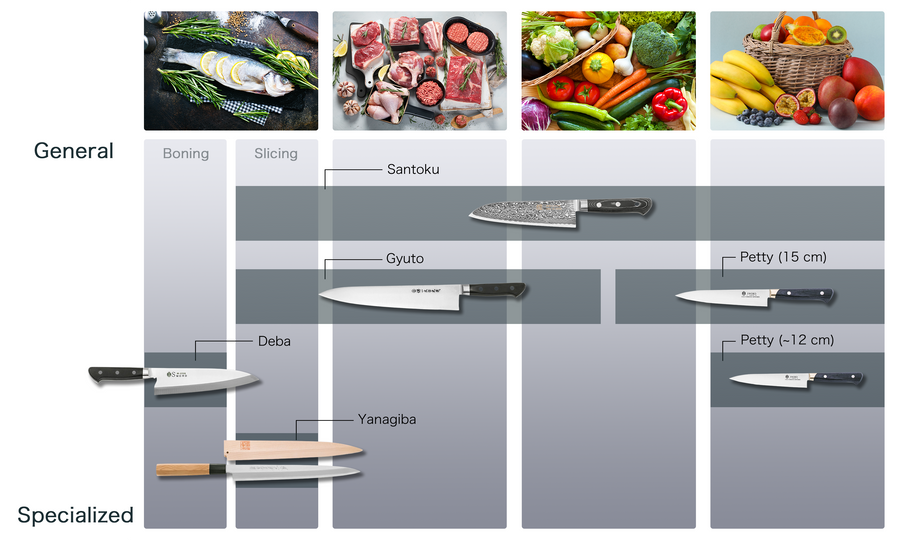Fugubiki: Thinner and lighter than Yanagiba knife, ideal for precise cuts for thin slice.
- Blade: VG-10; Standard Steel
- Honyaki: A Forging Process which is similar to traditional Japanese sword making technique. It makes the knives hard, sharp and have a high edge retention.
- Handle: Yew wood with buffalo horn ferrule; beautiful and durable
Mirror Finish Blade
The blade with luster that evokes a sense of luxury. Also, it is more resistant to rust than other surface finishes.
| Product number | Actual Blade Length (mm) | Full Length (mm) | Total Weight (g) |
|---|---|---|---|
| 1fvh-p270 | 260 | 415 | 125 |
| 1fvh-p300 | 290 | 450 | 150 |
| Blade | Material Name | Handle |
|---|---|---|

Single Edged |
VG-10 | Ebony octagonal handle |

Fugubiki
The Fugubiki is a thinner and narrow version of a classic Yanagiba, this difference in shape makes it ideal for precise cuts for thin slice such as Japanese Puffer fish. Also, it can be used to slice fish in the same way as Yanagiba.
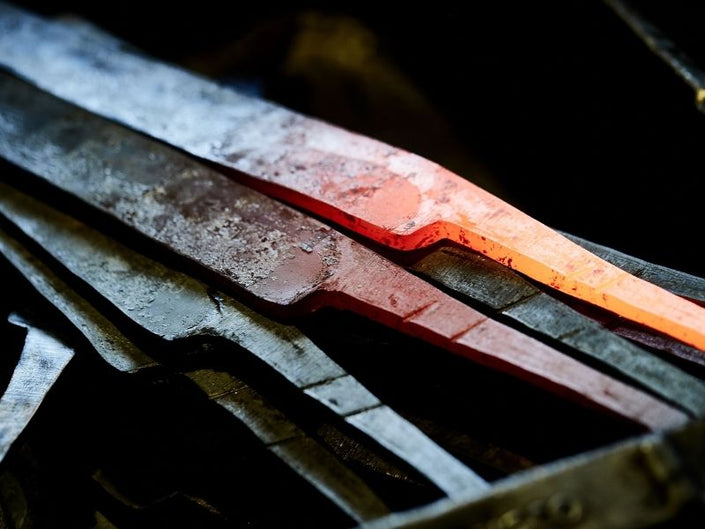
VG10
Stainless Steel
VG10 is one of the most popular stainless steels on the market today. It has very few impurities and maintains a good hardness with the added benefit of being easy to sharpen and rust resistent.
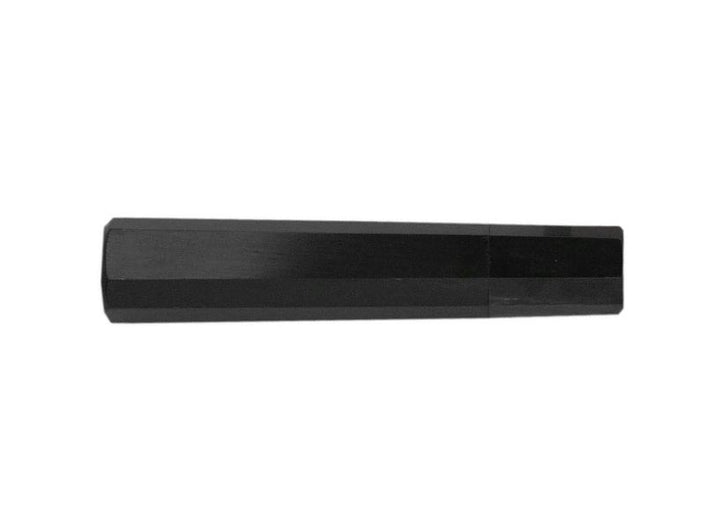
Ebony octagonal handle
Handle
Ebony octagonal handle
We use an ebony handle that brings high durability and balance to the knives.
Because of its beauty and robustness and the difficulty of processing
It is popular as the most exclusive wood and is used in Buddhist altars.
The unique grain of the wood will naturally become more comfortable in your hand as you use it.
Honyaki
Forging Process
The Honyaki method produces some of the highest grade kitchen knives in the world. It is an extremely difficult and laborious process, reminiscent of traditional Japanese sword making techniques, there are few craftsmen in Japan today that are capable of producing blades this way due to the high level of experience, skill and physical dexterity required. The blades made from the Honyaku method will often have a distinct "Hamon" or edge line in the blade, they are extremely sharp but easily chipped due to their high hardness, so require care when using.
A knife store that has supported the history of knives and food culture in Japan.
It has been 600 years since the birth of swordmaking in the Sakai region of Japan. Sakai Ichimonji Mitsuhide's and it's craftsmen continue to build on that legacy by producing the finest blades in Japan.
This is where the culture of completing a dish of sashimi by "just cutting" and the culture of expressing sharpness as "taste" was born.
For 70 years, we have been connecting the spirit of Sakai's craftsmen with the passion of chefs in Osaka's kitchen equipment shopping district, known as the kitchen of Japan.
We are very happy that our knives can be used by people all over the world.
Precautions
After use, wash off any dirt and wipe thoroughly with a dry cloth to remove any moisture. This product is not for use with frozen foods.This product is handmade, so each piece will be different. Please use the weight and length listed as a guide. Each material is natural and may vary in color. It is not the same as the picture.We take great care with our inventory, but in the unlikely event that we are out of stock, we will contact you by email to let you know.



























